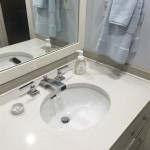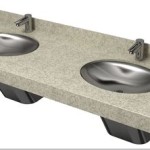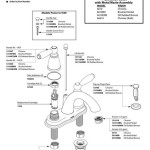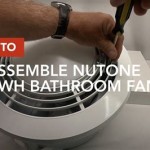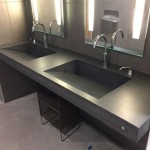Bathroom Sink Overflow Hole Leaking Water
A leaking bathroom sink overflow hole can be a perplexing plumbing issue. While often overlooked, the overflow hole serves a crucial function, preventing water from spilling over the edge of the sink basin. When this essential safety feature begins to leak, it signals a potential problem within the drain system. Understanding the workings of the overflow system and the common causes of leaks can help homeowners troubleshoot and address the issue effectively.
The overflow hole is connected to the drain assembly via a channel within the sink basin. This channel allows excess water to flow down the drain when the sink is overfilled. The drain assembly itself typically consists of several components, including a pop-up stopper, a pivot rod, a clevis strap, and a tailpiece connecting to the P-trap. A leak from the overflow hole often indicates a problem with one or more of these components, or with the seals that connect them.
One common cause of overflow leaks is a loose or damaged overflow channel. Over time, the sealant around the channel can deteriorate, allowing water to seep through. Mineral buildup can also obstruct the channel, causing water to back up and leak out of the overflow hole. Inspecting the overflow channel for cracks or gaps can reveal whether resealing is necessary. Cleaning the channel with a brush and a mild cleaning solution can remove any blockage.
Another frequent culprit is a faulty pop-up stopper. The pop-up assembly uses a series of linkages to raise and lower the stopper, controlling the flow of water. If the stopper isn't sealing properly, water can bypass it and leak into the overflow channel. This issue can often be resolved by adjusting the clevis strap, the piece that connects the pivot rod to the stopper. Tightening or loosening the screw on the clevis strap can adjust the stopper's position, ensuring a tight seal.
A worn-out or improperly installed drain gasket can also contribute to overflow leaks. The drain gasket sits between the sink and the drain flange, forming a watertight seal. If this gasket is cracked, damaged, or incorrectly positioned, water can escape into the overflow channel. Replacing the drain gasket requires removing the old gasket and applying plumber's putty to the underside of the new gasket before installing it. Ensuring proper alignment and a snug fit are essential for creating a reliable seal.
A clogged or improperly vented drain line can also lead to overflow leaks. When the drain line is obstructed, water pressure can build up within the pipes, forcing water out through the overflow hole. Similarly, inadequate venting can create negative pressure in the drain lines, pulling water from the sink basin and potentially causing leaks. Snaking the drain line can clear any clogs, while consulting a plumber can assess and correct venting issues.
The tailpiece, the connecting pipe between the drain assembly and the P-trap, can also be a source of leaks. A loose connection or a crack in the tailpiece can allow water to escape. Tightening the slip nuts at both ends of the tailpiece can often resolve loose connections. Replacing the tailpiece may be necessary if it is damaged or corroded.
Troubleshooting an overflow leak involves systematically examining each component of the drain assembly and the associated plumbing. Starting with the simplest solutions, such as cleaning the overflow channel and adjusting the pop-up stopper, can often resolve the issue. If these initial steps don't rectify the leak, further investigation of the drain gasket, drain line, and tailpiece is necessary. For complex issues or persistent leaks, consulting a qualified plumber is advisable to ensure proper diagnosis and repair, preventing further damage and water waste.
Regular maintenance can help prevent overflow leaks and maintain the overall health of the sink drain. Periodically cleaning the overflow channel with a brush and mild detergent can prevent mineral buildup and maintain proper drainage. Inspecting the drain components for signs of wear and tear, such as cracks or loose connections, can also help identify potential problems before they escalate into leaks. Implementing these preventative measures can save time, money, and the inconvenience of dealing with a leaking overflow hole.
Properly addressing a leaking overflow hole involves identifying the root cause of the problem and implementing the appropriate solution. While some fixes can be easily accomplished with basic tools and readily available supplies, more complex issues may require professional expertise. Understanding the workings of the overflow drain system and the various factors that can contribute to leaks empowers homeowners to address this common plumbing problem effectively.

Water Leak Once The Level Reaches Overflow Hole Need Advise Thanks Doityourself Com Community Forums

How To Clean A Bathroom Sink Overflow Hole

Finding Leaks At Sinks Professional Engineering Inspections Inc

What To Do If Your Bathroom Floods Living By Homeserve

Bathroom Sink Drain Leaking Around Threads Premier Plumbing Inc

6 Simple Steps To Clean Sink Overflow Pipe Pro Tips

Bathroom Leak Top 5 Causes Waterleak Co

Cockroach Coming Out Of Hole In Sink Bogleheads Org

New Bathroom Sink Drain Leaks At Threads

Function And Cleaning Of A Sink Overflow Hole Merry Maids
Related Posts
